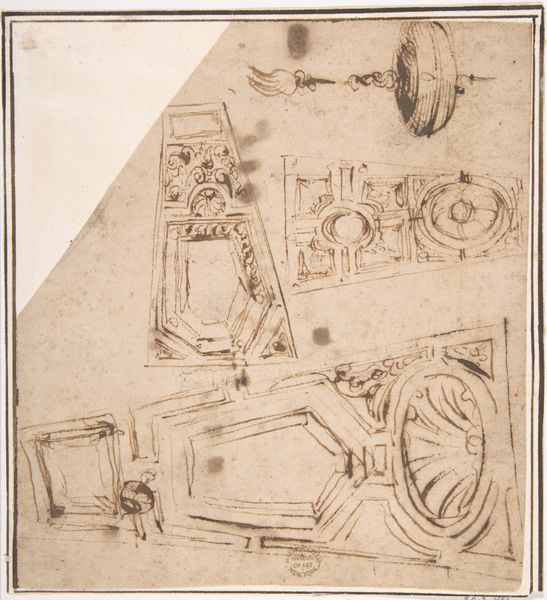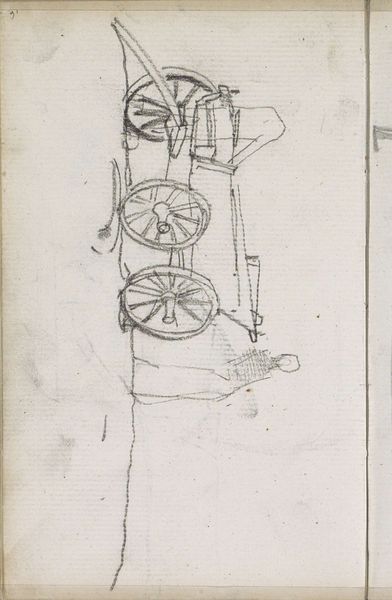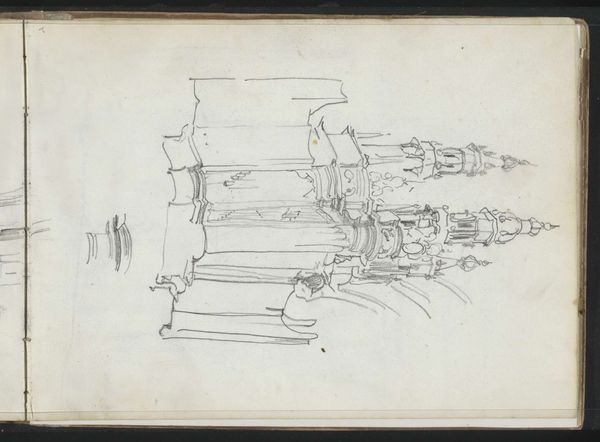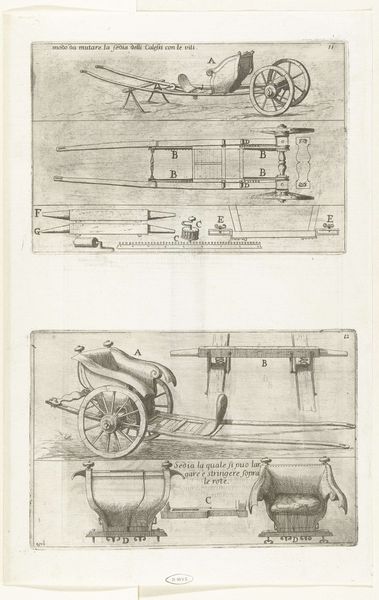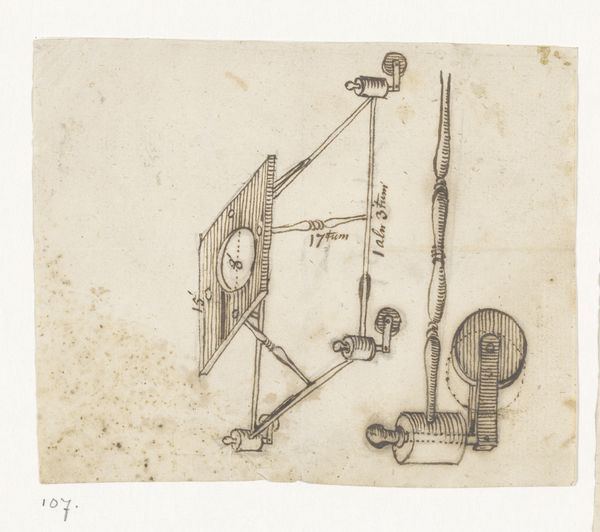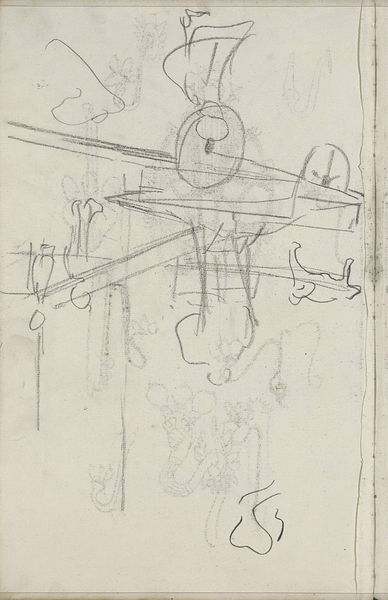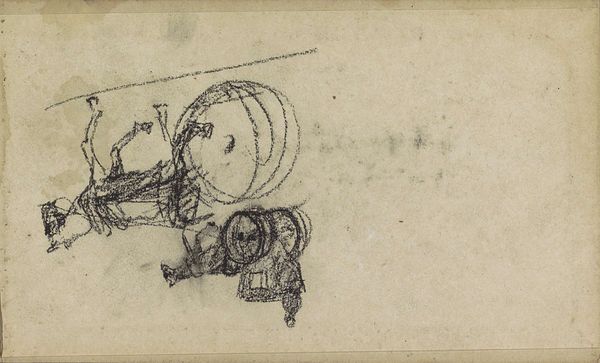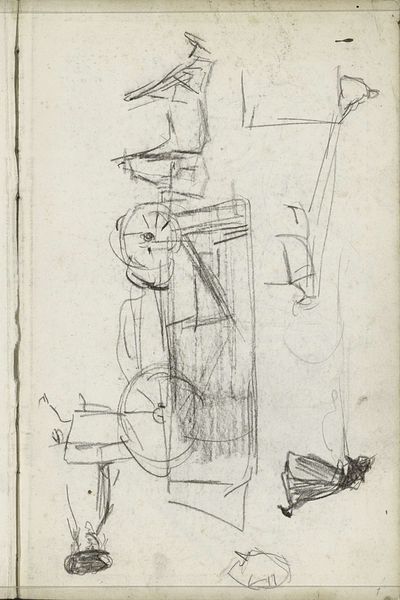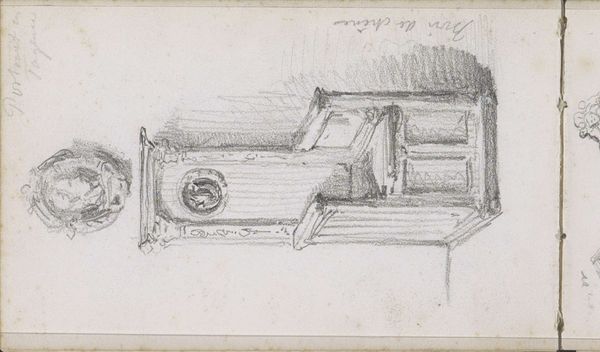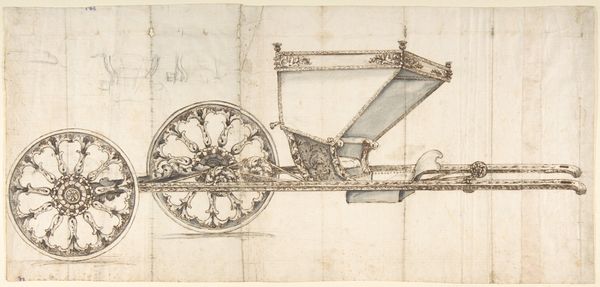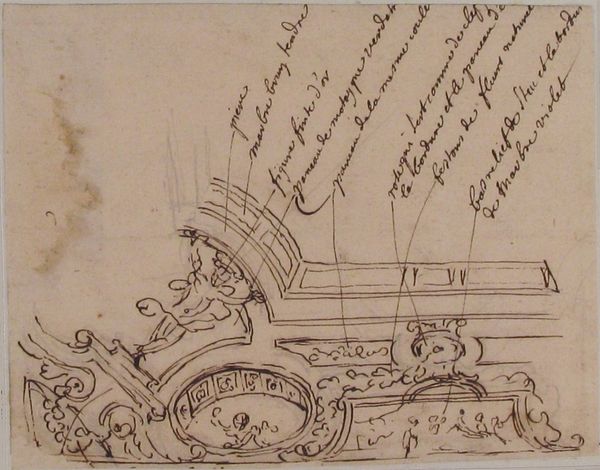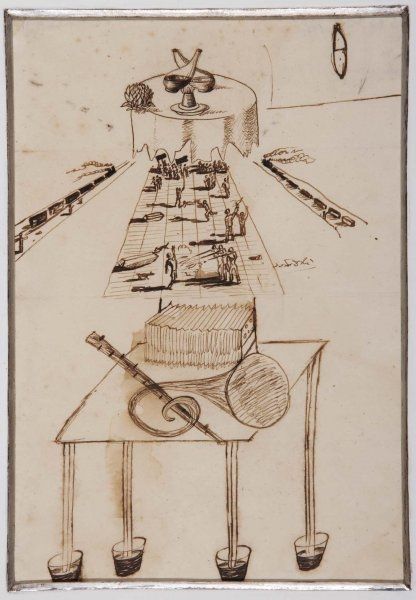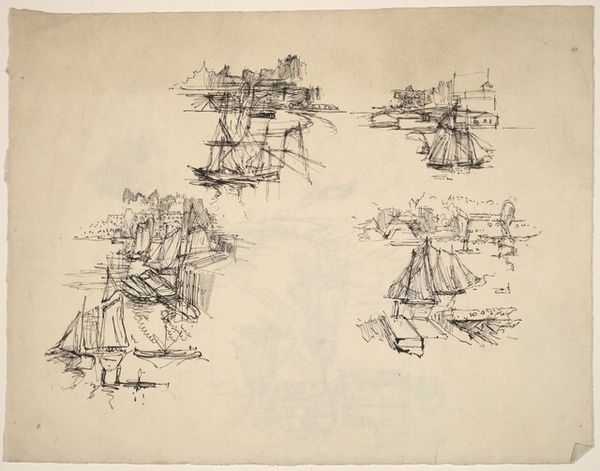
drawing, paper, ink
#
drawing
#
landscape
#
figuration
#
paper
#
ink
Copyright: Rijks Museum: Open Domain
Editor: So, this is "Onderdelen van de constructie van een boerenwagen," which roughly translates to "Parts of the Construction of a Farm Wagon," by Simon Andreas Krausz, created sometime between 1770 and 1825. It’s an ink drawing on paper, almost like a technical diagram. What strikes me is how it elevates these utilitarian objects to a level of artistic study. What do you see in this piece? Curator: For me, it's the very nature of *how* Krausz depicted these wagon parts that resonates. We aren't presented with a romanticized view of rural life. Instead, he lays bare the means of production itself. The ink on paper serves not to create an illusion, but to meticulously record the materials and their configuration, the nuts and bolts, so to speak, of agricultural labor. Editor: I hadn’t considered that… it’s like he's focusing on the actual *making* of the rural economy, rather than just its face value. Do you think the drawing style reflects that? Curator: Absolutely. Notice the stark lines and almost scientific precision? There’s a distinct lack of painterly flourish. He’s examining the labour embedded within these objects. We are invited to consider not just the object itself, but also the artisanal skill required for its creation, and how it fits into the broader system of agricultural production and even consumption. It asks us to reflect on our relationship to the material world. Editor: So, it's not just about the beauty of the wagon, but about understanding the work and resources involved? Curator: Precisely. He prompts a materialist reading, pushing against purely aesthetic interpretations and toward the recognition of labour as part of the equation. Editor: I see, looking at the work this way provides such a broader social commentary, doesn't it? I'll remember that next time. Thanks for shedding a new light on this piece, it’s amazing how seeing art this way opens so many questions! Curator: My pleasure! Indeed, it allows for a deeper understanding, placing materiality at the center of our analysis and appreciation.
Comments
No comments
Be the first to comment and join the conversation on the ultimate creative platform.
